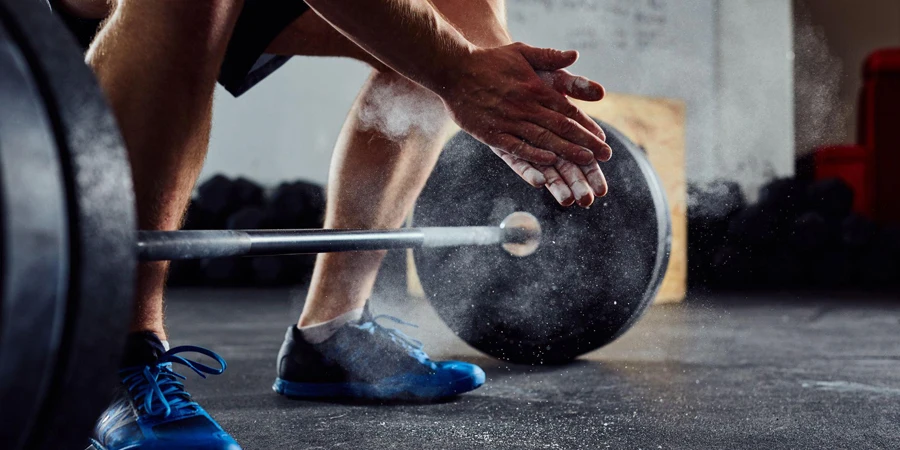Introduction
As a key piece of strength training equipment, the barbell remains essential in fitness routines. With the diversity and sophistication of barbells expanding in 2024, business buyers face both opportunities and challenges. This guide, designed for company and shop buyers, simplifies choosing the right barbell from the vast options available. Staying updated on the latest barbell trends and technologies is crucial for making informed choices that surpass client expectations.
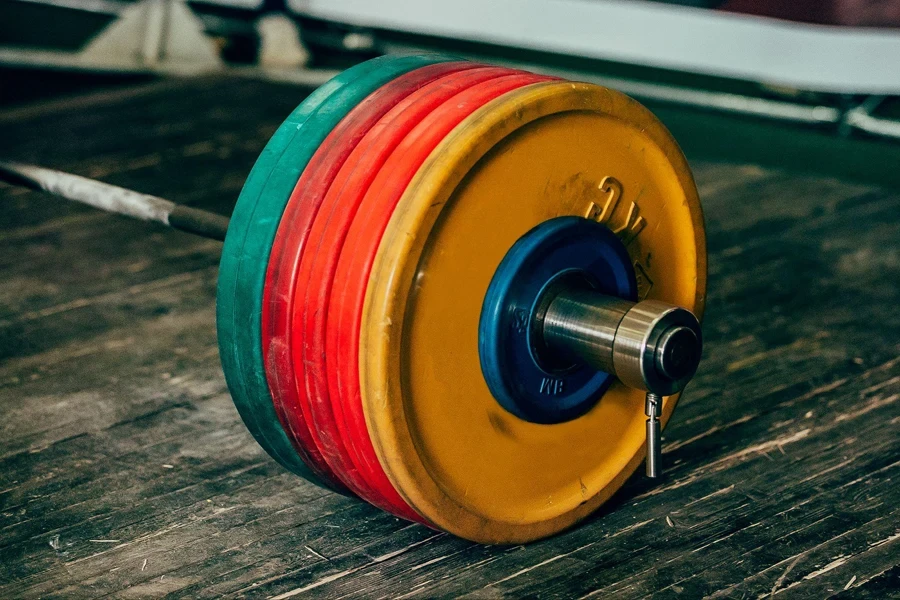
Focusing on these trends allows buyers to bring unique value to their business. By grasping the latest in barbell innovation, from new materials and designs to smart tech, buyers can improve their selections, stand out in the market, and gain a competitive edge. This guide is your pathway to understanding the barbell market’s evolution, highlighting the importance of informed decision-making to enhance your investment and your customers’ strength training experience.
Barbell Market Overview
The global barbell market has witnessed steady growth in recent years, driven by increasing health consciousness and the rising popularity of strength training. In 2023, the market size reached approximately USD 550 million and is projected to grow at a CAGR of 4.5% from 2024 to 2028, potentially reaching USD 700 million by 2028. The market is segmented based on type (Olympic, powerlifting, standard), material (stainless steel, carbon steel) and region. North America holds the largest market share, followed by Europe and Asia-Pacific.
Key Considerations When Selecting a Barbell
Barbell Type and Purpose
Understanding the different types of barbells is crucial for making an informed decision:
1. Olympic Barbells: Designed for weightlifting, these bars have a 2″ sleeve diameter, 28-29 mm shaft, and bearings or bushings for smooth rotation. They typically weigh 20kg (men’s) or 15kg (women’s).
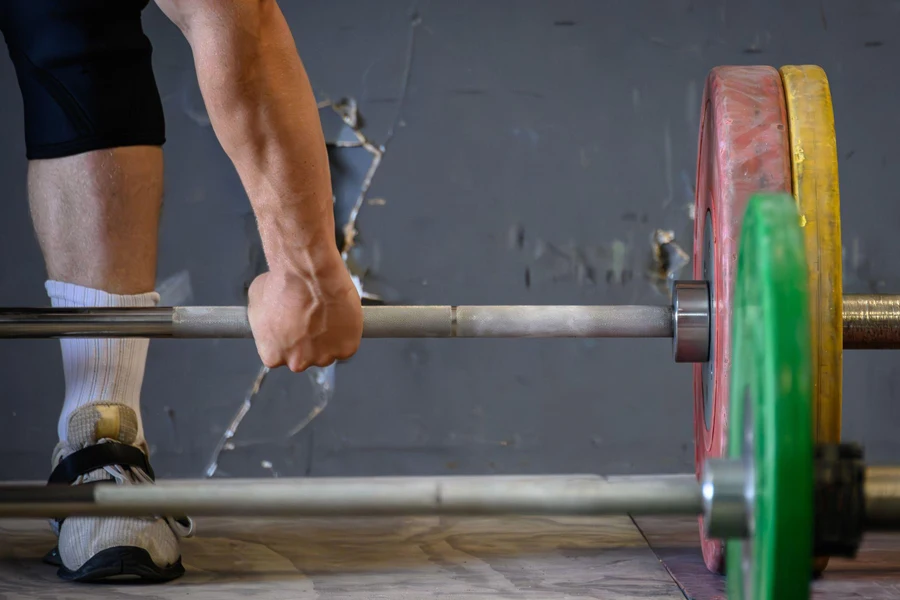
2. Powerlifting Barbells: Built for heavy lifts, these bars have a 29-32mm shaft, aggressive knurling, and minimal whip. They are ideal for squats, bench presses, and deadlifts.
3. Standard Barbells: Versatile bars suitable for general strength training, with a 1″ sleeve diameter and 25-30mm shaft. They are affordable and widely available. These are ideal for home gyms and commercial fitness facilities
4. Specialty Bars: Designed for specific exercises or muscle groups.
– Hex Trap Bar: Enables neutral grip deadlifts, reducing spinal stress
– Safety Squat Bar: Allows for upright torso during squats, alleviating shoulder strain
– EZ Curl Bar: Features angled grips to target biceps while minimizing wrist strain
Consider the primary use for the barbell. Olympic barbells are designed for weightlifting exercises like snatches and clean and jerks, featuring higher whip and spin. Powerlifting bars are stiffer and have aggressive knurling for maximal grip during heavy lifts like squats, deadlifts, and bench presses. Standard barbells are versatile and suitable for general strength training. Specialty bars cater to specific goals and can be a valuable addition to any gym.
Knurling and Grip
Knurling refers to the textured pattern on the barbell shaft that enhances grip. For powerlifting, choose bars with aggressive knurling for a secure hold. Olympic bars have gentler knurling to allow smooth transitions during lifts. Center knurling provides extra grip for back squats.
Knurling refers to the textured pattern on the barbell shaft that enhances grip. Consider the preferences and lifting style when selecting knurling:
1. Aggressiveness: Moderate knurling suits most lifters, while aggressive knurling benefits powerlifters and those with grip issues.
2. Knurl Marks: Powerlifting bars have a center knurl and two sets of marks for hand placement, while Olympic bars have no center knurl and one set of marks.
3. Coating: Bare steel provides the best grip but requires maintenance. Chrome, zinc, and cerakote coatings offer durability and corrosion resistance.
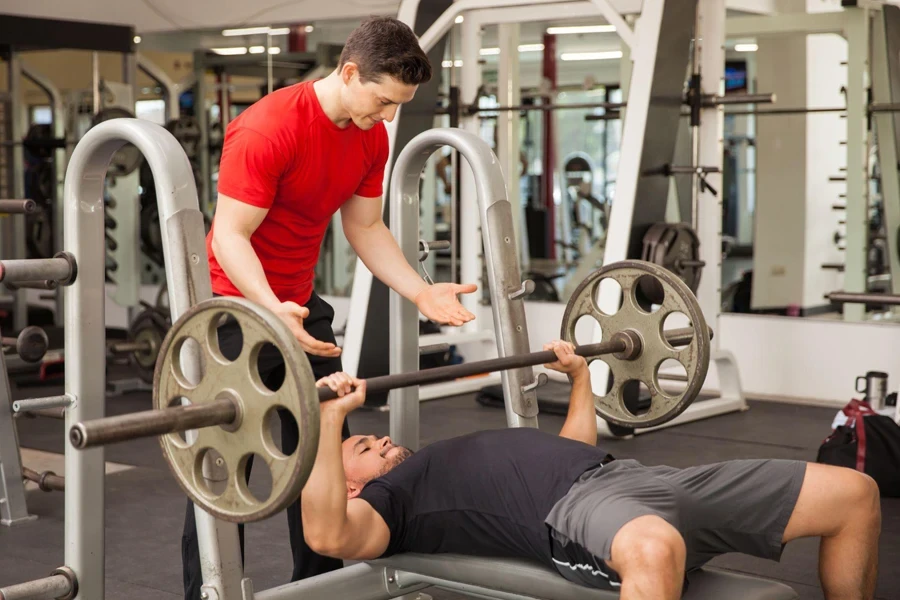
Tensile Strength and Durability
Tensile strength, measured in pounds per square inch (PSI), indicates a barbell’s ability to resist deformation under load. It is a crucial factor in determining the durability and safety of a barbell.
When selecting a barbell, consider the following tensile strength guidelines:
1. Minimum tensile strength: Look for bars with at least 190,000 PSI to ensure longevity and safety during use.
2. High-quality materials: Opt for barbells made from premium materials such as stainless steel or high-grade carbon steel, which often boast tensile strengths of 200,000 PSI or higher.
3. Heavy lifting: If you plan on engaging in heavy powerlifting or Olympic weightlifting, choose a bar with a tensile strength exceeding 200,000 PSI to withstand the rigors of intense training.
Barbells with higher tensile strengths are more resistant to bending, breaking, and permanent deformation, providing a safer and more reliable lifting experience. However, it’s essential to note that higher tensile strength often comes at a higher price point.
In addition to tensile strength, consider the bar’s coating and maintenance requirements. Stainless steel bars are resistant to rust and corrosion, requiring minimal maintenance. Chrome-plated bars offer good protection against rust but may require more frequent cleaning. Bare steel bars develop a patina over time and require regular oiling to prevent rust.
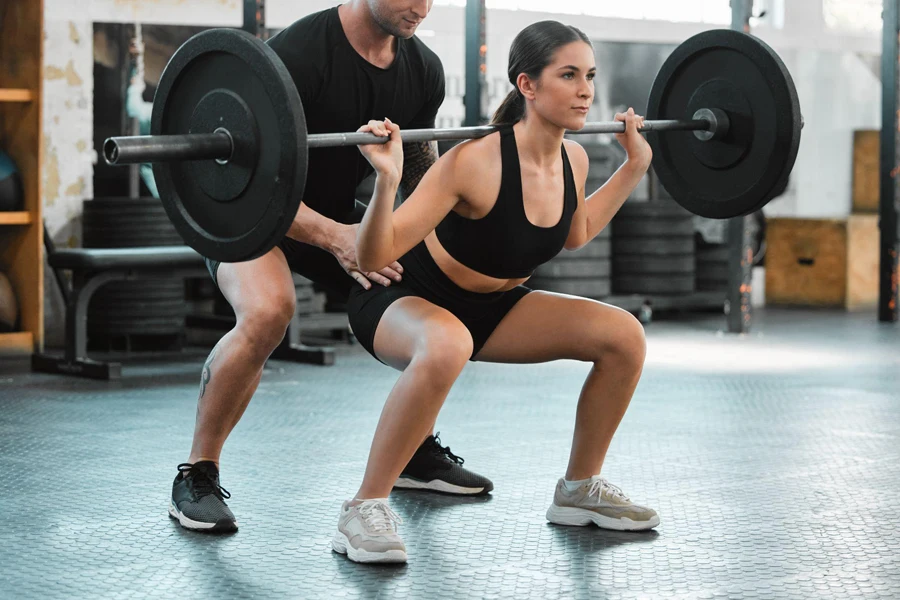
Bar Diameter and Whip
Olympic barbells are designed with specific dimensions to cater to different users, featuring a 28mm diameter for men’s bars and a 25mm diameter for women’s bars. The thinner shaft of these barbells allows for more whip and flex, which is particularly beneficial during dynamic lifts. On the other hand, powerlifting barbells usually have a shaft diameter of 29mm or thicker, offering reduced whip and increased rigidity. This design enhances stability during heavy lifts such as squats, bench presses, and deadlifts, making them ideal for powerlifting exercises.
Whip refers to the barbell’s elasticity and oscillation during lifts. It is the bar’s ability to store and release elastic energy. More whip is beneficial for Olympic weightlifting, allowing the lifter to use the bar’s flex to their advantage in movements like snatches and clean and jerks. Less whip is preferred for powerlifting, providing a stiffer bar for maximum power transfer and reduced instability
Factors affecting whip:
1. Shaft diameter: Thinner bars have more whip, thicker bars have less.
2. Material: Higher tensile strength steel yields less whip.
3. Construction: Barbell manufacturing processes can influence whips.
Specialty bars, like deadlift bars, often have even more aggressive whip profiles to assist in pulling heavy weights off the floor. On the other hand, squat bars are very stiff by design to handle extreme compressive forces.
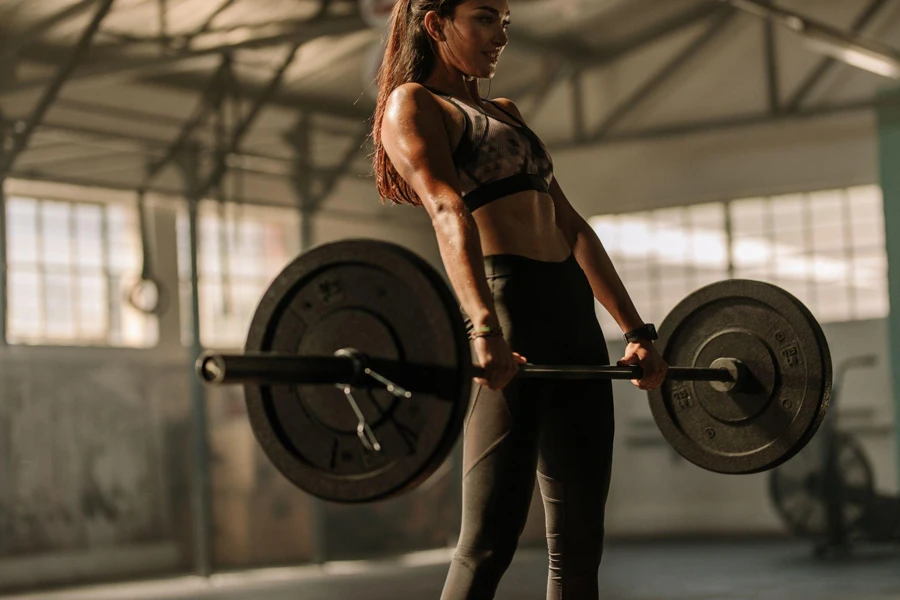
Sleeve Rotation and Bushings vs Bearings
The sleeves are the ends of the barbell where weight plates are loaded. Smooth rotation of the sleeves is crucial for Olympic lifts like the snatch and clean and jerk.
Bushings:
– Cylindrical sleeves, usually made of bronze or composite materials, that allow the barbell sleeves to rotate around the shaft
– Provide adequate spin for most training needs at a lower cost compared to bearings
– Suitable for powerlifting bars where minimal rotation is preferred for increased stability during heavy squats, bench presses, and deadlifts
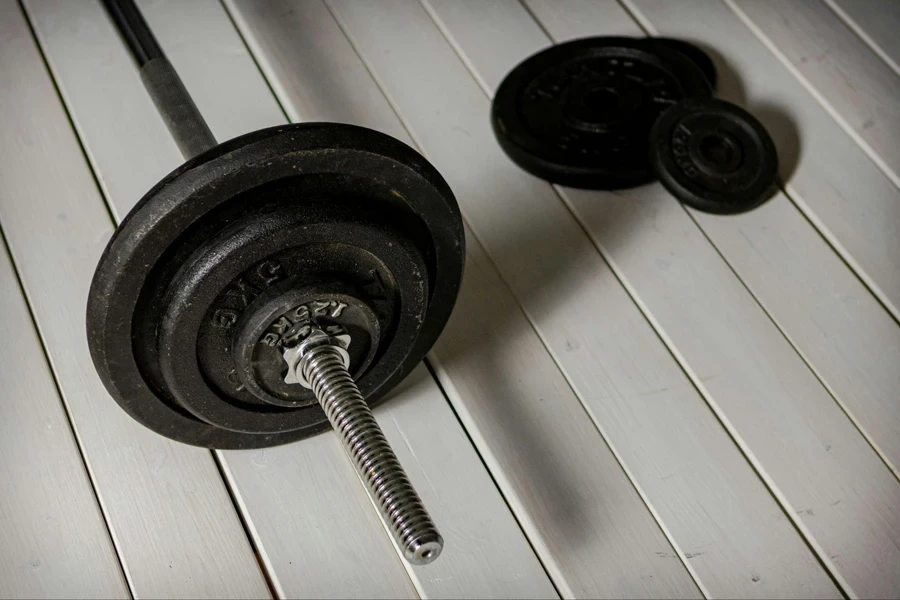
Bearings:
– Needle bearings offer the smoothest, fastest rotation for Olympic weightlifting bars
– Consist of small needle rollers that reduce friction between the bar shaft and sleeves as they spin
– Allow sleeves to spin freely under load during dynamic Olympic lifts
– More expensive than bushings
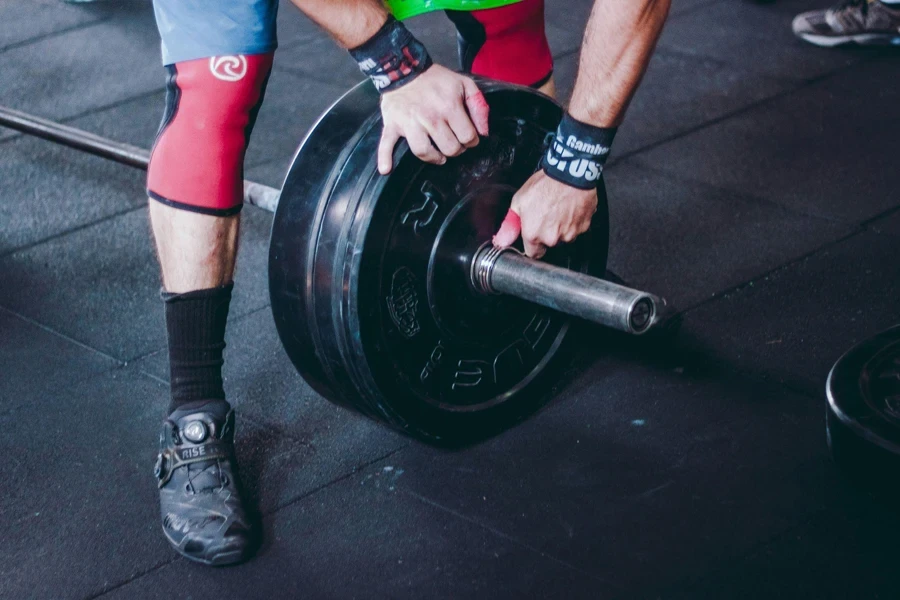
Some Olympic bars use a combination of bushings and bearings to balance cost and performance. The number, type, and placement of bearings impact sleeve rotation. More bearings generally provide smoother, faster spin. Needle bearings outperform ball bearings. Most importantly, quality of bearings is more important than quantity.
High-end Olympic bars often feature precision needle bearings that spin on an inner race, avoiding direct contact with the bar shaft to reduce wear and ensure consistent rotation. Proper engineering and tight manufacturing tolerances are key to optimizing sleeve rotation for the demands of Olympic weightlifting.
Budget and Warranty
Invest in a high-quality barbell that fits your budget. Expect to spend $200-$300 for a reliable multipurpose bar and $500+ for premium Olympic or powerlifting bars. Look for bars with lifetime warranties for peace of mind.
Conclusion
Investing in the right barbell is a game-changer for the strength training journey. By considering factors such as barbell type, tensile strength, knurling, sleeve rotation, and budget, you can make an informed decision that aligns with typical goals. With the perfect barbell as your foundation, you’ll be well-equipped to elevate your clients’ strength and health to new heights in 2024.
Don’t forget to click the “Subscribe” button to stay updated with more articles that align with your business needs and interests on the Alibaba Reads sports blog.
